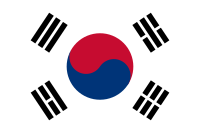Culture
- See also: Wikipedia: Culture
Culture in origin
[edit | edit source]- See also: Wikipedia: Culture #Etymology




The umbrella term culture may cover the way how humans live, hence the ground of humanities, especially of philosophy, anthropology and sociology. Meanwhile, The Two Cultures for example literally regards humanities and sciences as poles apart, like yin and yang in contrast. But the one would better be regarded as wuji (無極) or taiji (太極), including the other within.
The noun culture stems from the Latin verb colere[1] meaning "to turn over the soil so as to grow[2] plants" above all. Such etymology suggests that culture in itself may have begun with agriculture or cultivation of plants.
The modern use of culture traces back to the ancient Roman orator Cicero, who, by using an agricultural metaphor, mentioned "cultura animi" ("cultivation of the soul") as the ideal for human development and way of life.
By the way, to plough or turn over the soil, to be precise, is to form not only the furrow but also the ridge[3] in pair, side by side, as yin and yang. Their joint cross-section is roughly sinusoid.
The schematic cross-section of the ancient Offa's Dyke shows both concavity and convexity, west and east, or left and right, of the inflection point at the center of the curve.
In Korean, the one is 굳 (gut, "hollow, cave, gut") as yin, while the other is 둑 (duk, "dyke, levee") as yang. One is an anagram of, as well as antonym to, another. This pair may well compare with the 고랑 (gorang) and 두둑 (duduk), respectively.
In Chinese, 凹 is concavity while 凸 is convexity. Both renders 凹凸 "bumpy, rugged, uneven".
In Japanese, both 凹凸 (outotsu) and 凸凹 (dekoboko) are used. The Japanese convexity 凸, whether totsu or deko, may well compare with Korean 둑 (duk, 凸).
The curve is sinusoid. The like is also found in Taijitu, the Western Roman shield pattern, and the Flag of South Korea.
In English, meanwhile, both aspects confuse into the British spelling dyke and the American alternative form dike. Perhaps to avoid such confusion, American Wikipedia resorted to Levee instead.
The doublet ditch means "trench" as for irrigation or drainage. German Teich ("pond") is the doublet of Deich ("dyke, levee"), both senses of which are also found in Korean 방죽 alone, confusingly again!
More doublets or cognates may include dough and even thigh and thick in English; respectively, Deig and even Diech and dick in German.
While concavity and convexity must be polar, the mild and wild, or thin and thick, kinds of convexity may well contrast dune with dyke, as well as thin with thick, dünn with dick in German, or 둔 (dun) with 둑 (duk) in Korean.
- See also
Cultural studies
[edit | edit source]- See also: Wikipedia: Cultural studies
Beyond Culture
[edit | edit source]- See also: Wikipedia: Beyond Culture
- ↑ That is, 갈다 (galda) in Korean.
- ↑ Korean 기르다 (gireuda, "to grow") is the exact counterpart of Engish grow, as each adopts both agricultural and cultural objects.
- ↑ In Korean, the one is Korean/Words/고랑 (gorang) and the other is Korean/Words/두둑 (duduk).
